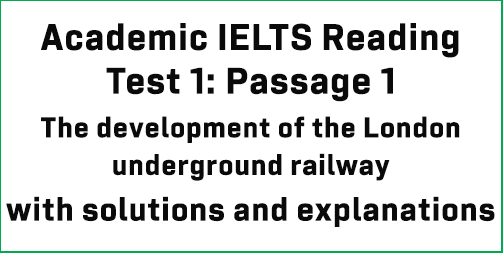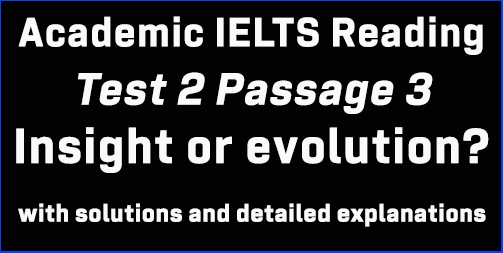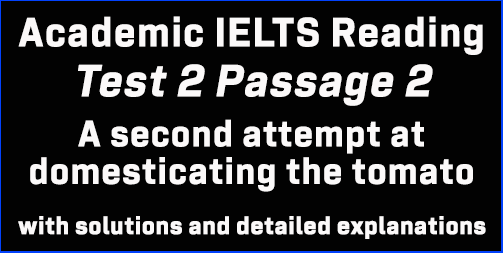Academic IELTS Reading: Test 1 Reading passage 1; The development of the London underground railway; with complete solutions and detailed explanations
This Academic IELTS Reading post focuses on solutions to IELTS Reading Test 1 Reading Passage 1 titled ‘The development of the London underground railway’. This is a targeted post for IELTS candidates who have major problems finding out and understanding Reading Answers in the AC module. This post can guide you to the best to understand every Reading answer without much trouble. Finding out IELTS Reading answers is a steady process, and this post will assist you in this respect.
IELTS AC Reading Module: Test 1
Reading Passage 1: Questions 1-13
The headline of the passage: The development of the London underground railway
Questions 1-6: Completing notes
[In this type of question, candidates must complete different notes with ONE WORD ONLY from the passage. Keywords are important to find answers correctly. Generally, this type of question maintains a sequence. However, there might be a break in the sequence. Find the keywords in the passage and you are most likely to find the answers.]
Title of the notes: The London underground railway
Question no. 1:
The problem:
The _________ of London increased rapidly between 1800 and 1850
Keywords for the question: problem, London, increased rapidly, between 1800 and 1850
For this question, we have to look at the first paragraph. Here, in the very first line the writer says, “In the first half of the 1800s, London’s population grew at an astonishing rate, . … .. …”
Here, the first half of the 1800s = between 1800 and 1850, grew at an astonishing rate = increased rapidly,
So, the answer is: population
Question no. 2:
The proposed solution:
- Charles Pearson, a solicitor, suggested building an underground railway
- Building the railway would make it possible to move people to better housing in the________________
Keywords for the question: proposed solution, Charles Pearson, suggested, building, underground railway, would make it possible, move people, to better housing in,
Lines 1-6 of paragraph no. 2 say, “Amongst the most vocal advocates for a solution to London’s traffic problems was Charles Pearson, who worked as a solicitor for the City of London. He saw both social and economic advantages in building an underground railway that would link the overground railway stations together and clear London slums at the same time. His idea was to relocate the poor workers who lived in the inner-city slums to newly constructed suburbs, and to provide cheap rail travel for them to get to work. . .. .. .. .”
Here, newly constructed suburbs = better housing in the suburbs,
So, the answer is: suburbs
Question no. 3:
- A number of__________ agreed with Pearson’s idea
Keywords for the question: a number of, agreed with, Pearson’s idea,
In lines 6-7 of paragraph no. 2, the writer says, “ . .. . . … .. Pearson’s ideas gained support amongst some businessmen and in 1851 he submitted a plan to Parliament. .. . .. .. .”
Here, gained support = was agreed by, some = a number of,
So, the answer is: businessmen
Question no. 4:
- The company initially had problems getting the ____________ needed for the project
Keywords for the question: the company, initially, had problems, getting, needed for the project,
In paragraph no. 3, take a close look at line no. 4, “ … … .. The organisation had difficulty in raising the funding for such a radical and expensive scheme, . .. .. .”
Here, the organisation had difficulty = The company initially had problems, raising = getting, a radical and expensive scheme = the expensive project,
So, the answer is: funding
Question no. 5:
- Negative articles about the project appeared in the 5. ____________
Keywords for the question: negative articles, about the project, appeared in,
Again, in paragraph no. 3, take a close look at lines 4-5, “ … … .. The organisation had difficulty in raising the funding for such a radical and expensive scheme, not least because of the critical articles printed by the press. . .. .. .”
Here, critical articles = negative articles, printed = appeared in,
So, the answer is: press
Question no. 6:
The construction:
- With the completion of the brick arch, the tunnel was covered with 6. ______________
Keywords for the question: the construction, with, completion of the brick arch, the tunnel, was covered with,
In paragraph no. 4, take a look at the final lines, “ . . … .. Brick walls were then constructed, and finally a brick arch was added to create a tunnel. A two-metre-deep layer of soil was laid on top of the tunnel and the road above rebuilt.”
Here, finally a brick arch was added = the completion of the brick arch, was laid on top of the tunnel = the tunnel was covered with,
So, the answer is: soil
Questions 7-13: TRUE, FALSE, NOT GIVEN
[In this type of question, candidates have to find out whether:
The statement in the question agrees with the information in the passage – TRUE
The statement in the question contradicts the information in the passage – FALSE
If there is no information on the statement – NOT GIVEN
For this type of question, you can divide each statement into three independent pieces and make your way through with the answer.]
Question no. 7: Other countries had built underground railways before the Metropolitan line opened.
Keywords for the question: other countries, built, underground railways, before, Metropolitan line, opened,
The first line of paragraph no. 5 gives answer to this question, as the author of the text says here, “The Metropolitan line, which opened on 10 January 1863, was the world’s first underground railway. .. . . .”
Here, was the world’s first underground railway = NO other countries had built underground railways before the Metropolitan line,
So, the answer is: FALSE
Question no. 8: More people than predicted travelled on the Metropolitan line on the first day.
Keywords for the question: more people, than predicted, travelled, Metropolitan line, first day,
We do not find any information regarding the predicted number of travellers on the Metropolitan line on the first day. In paragraph no. 5, the writer only mentions, “ . . . On its first day, almost 40,000 passengers were carried between Paddington and Farringdon, the journey taking about 18 minutes. .. . .”
So, the information in the question is missing.
So, the answer is: NOT GIVEN
Question no. 9: The use of ventilation shafts failed to prevent pollution in the tunnels.
Keywords for the question: use of ventilation shafts, failed to prevent, pollution, tunnels,
Have a look at the final lines of paragraph no. 6. The writer says here, “ . . .. . However, smoke and fumes remained a problem, even though ventilation shafts were added to the tunnels.”
Here, smoke and fumes remained a problem = pollution problem in the tunnels, even though ventilation shafts were added = The use of ventilation shafts failed to prevent pollution,
So, the answer is: TRUE
Question no. 10: A different approach from the ‘cut and cover’ technique was required in London’s central area.
Keywords for the question: a different approach from, ‘cut and cover’ technique, was required, London’s central area,
Have a look at the final lines of paragraph no. 7. The writer says here, “ . . .. . The ‘cut and cover’ method of construction was not an option in this part of the capital. The only alternative was to tunnel deep underground.”
Here, The ‘cut and cover’ method of construction was not an option = the tunnel required a different approach from the ‘cut and cover’ technique, this part of the capital = London’s central area, The only alternative was to tunnel deep underground = the different approach,
So, the answer is: TRUE
Question no. 11: The windows on City & South London trains were at eye level.
Keywords for the question: windows, City & South London trains, were at eye level,
Have a look at lines 6-7 of paragraph no. 8. The writer says here, “ . . .. . The carriages were narrow and had tiny windows just below the roof because it was thought that passengers would not want to look out at the tunnel walls. .. . .. . .”
Here, just below the roof . . .. . . passengers would not want to look out at the tunnel walls = NOT at eye level,
So, the answer is: FALSE
Question no. 12: The City & South London Railway was a financial success.
Keywords for the question: City & South London Railway, was, financial success,
Lines 8-9 of paragraph no. 8 say, “ . .. . .. . Although the City & South London Railway was a great technical achievement, it did not make a profit. .. .. .”
Here, it did not make a profit = a financial failure, NOT a success,
So, the answer is: FALSE
Question no. 13: Trains on the ‘Tuppenny Tube’ nearly always ran on time.
Keywords for the question: trains, the ‘Tupenny Tube’, nearly always ran, on time,
In paragraph no. 8, the writer mentions ‘Tuppenny Tube’ in line no. 10. However, there is NO MENTION of the Tuppenny Tube running on time or not.
So, the answer is: NOT GIVEN
Click here for solutions to Academic Test 1 Passage 2: Stadiums: past, present and future




great
Thank you sir.sir please send Cambridge 17 test 2,3,4 and Cambridge 18 reading answer.we need your help